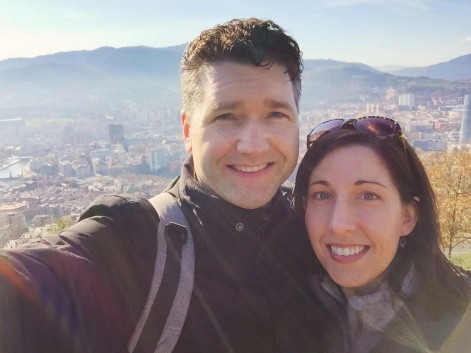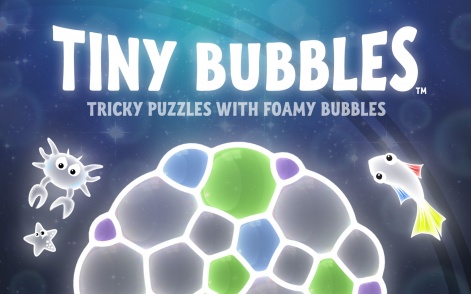The Big Indie Pitch is a regular event run by the makers of PocketGamer.biz. It sees indie developers engage in a speed-dating-styled pitching competition for fame and those sweet, sweet promotional packages.
The event gives indies four minutes to pitch their games to a panel of press, publishers and industry pundits. The judges then pick three winners and everybody gets valuable feedback.
The indie view
The Big Indie Pitch is getting bigger and bigger as we bring it to events all across the world. To give you an idea of what the event is like, who attends the events and the games on show, we've sat down with a number of past BIP contestants to offer their views.
Today, we're speaking to Stuart Denman from Pine Street Codeworks, who submited Tiny Bubbles to The Big Indie Pitch at GDC 2018 and walked away as with the prize for joint second place - the first time a joint second has ever been awarded at The Big Indie Pitch.

PocketGamer.biz: Tell us a little about yourself and your indie studio. Who is in the team and what are their inspirations?
Stuart Denman: I’ve been a game developer for about 20 years, working mostly on triple-A action-adventure games on consoles. This is the first game I’ve designed and made mostly on my own, but I’ve had help from my wife Paulette and I hired my old colleague Kristoffer Larson to do sound and music for Tiny Bubbles.
My games are inspired by the strange patterns and structures in nature. More specifically, Tiny Bubbles is inspired by my grandfather's scientific work on soap bubble foams in the 1950s.
My grandfather had tremendous influence over me as a boy, spending summers with him out in the woods of New England.
Tell us about your latest project that you pitched at the competition.
My "holy grail" as a game designer is to create an original game mechanic, like the 1980s classics first did: Tetris, Lode Runner, Frogger, etcetera.
So when I was brainstorming unexplored areas of gameplay, I started thinking about my grandfather’s work with soap bubbles.
Tiny Bubbles is an organic puzzle game about manipulating clusters of soap bubbles in a microscopic aquatic world. There are 172 puzzles in seven worlds with over 15 hours of gameplay.
Each puzzle has a different goal or strategy that you have to figure out. Using a queue of moves, you tap the bubbles to fill them with color or cut the edges to mix neighbors. The basic strategy is to line up four or more of the same colour bubble to make a match, but doing this involves using the bubble physics, which has unusual behavior.
The edges act like rubber bands while at the same time the air inside pushes out.
How hard is it to survive as an indie developer?
It’s difficult because it seduces you with it’s relatively low initial production costs and game development can be quite fun to do. But then you realise it’s going to take a lot longer to make a commercial product.
I find it really hard to balance my time between social media and marketing versus simply working on getting the game done.
Fortunately my wife Paulette does a lot of work to help get the word out and all the awards we’ve won help us with exposure at a relatively low cost. Not all indie developers have that, we are very fortunate and thankful.
How was your experience pitching as a part of the Big Indie Pitch?
It was a total rush. My adrenaline was pumping like crazy. Not so much out of nervousness, but just how little time you have. You want to show everything!
It was a very fun process and well organised. It was also a great opportunity to meet people and get feedback on Tiny Bubbles from experienced industry veterans.

What do you feel you have gained from these experiences and what do you still hope to gain?
I think Tiny Bubbles was a successful experiment for me in seeing if I can play around with something totally different and find fun in it. I want to keep doing that. Sometimes that takes a lot of effort because not every idea can be prototyped easily.
I’ve also met a lot of other great indie developers by going to showcases and events that I wouldn’t otherwise. There are a lot of really great games that end up being “hidden gems” because they get lost in the tsunami of games being released every day now.
The thing I hope for next is that people will get a chance to play Tiny Bubbles and see how fun and addictive the game is and then tell their friends about it.
What are your hopes for this game in the future and do you have any plans for any future projects?
We’d love to be noticed by the Apple and Google editorial teams, since featuring is critical to success these days.
We’re still very much focused on getting Tiny Bubbles out, but I will definitely post new ideas and interesting stuff up on my Twitter (@studenman) and on Pine Street's Twitter account (@pinestcw).
Want to show off your exciting new game? We host Big Indie Pitch events throughout the year, so be sure to keep an eye out on our events page for an event near you.
Upcoming BIPs include:
- May 14th to 15th - The Very Big Indie Pitch at Pocket Gamer Connects San Francisco 2018
- May 14th to 15th - The PC Indie Pitch at Pocket Gamer Connects San Francisco 2018
- Jun 12th to 14th 2018 - The Big Indie Pitch in LA 2018
- Jul 5th to 6th 2018 - The Big Indie Pitch at The Big Indie Fest in Vienna 2018
- Jul 5th to 6th 2018 - The PC Indie Pitch at The Big Indie Fest in Vienna 2018
- Jul 10th to 11th 2018 - The Big Indie Pitch at Develop:Brighton 2018
- Aug 3rd to 4th 2018 - The Big Indie Pitch at ChinaJoy 2018
- Aug 22nd to 23rd 2018 - The Big Indie Pitch at Gamescom 2018
- Sep 11th to 12th 2018 - The Very Big Indie Pitch at Pocket Gamer Connects Helsinki 2018
Get the latest news, interviews and in-depth analysis on Twitter, Facebook and our daily newsletter.




















